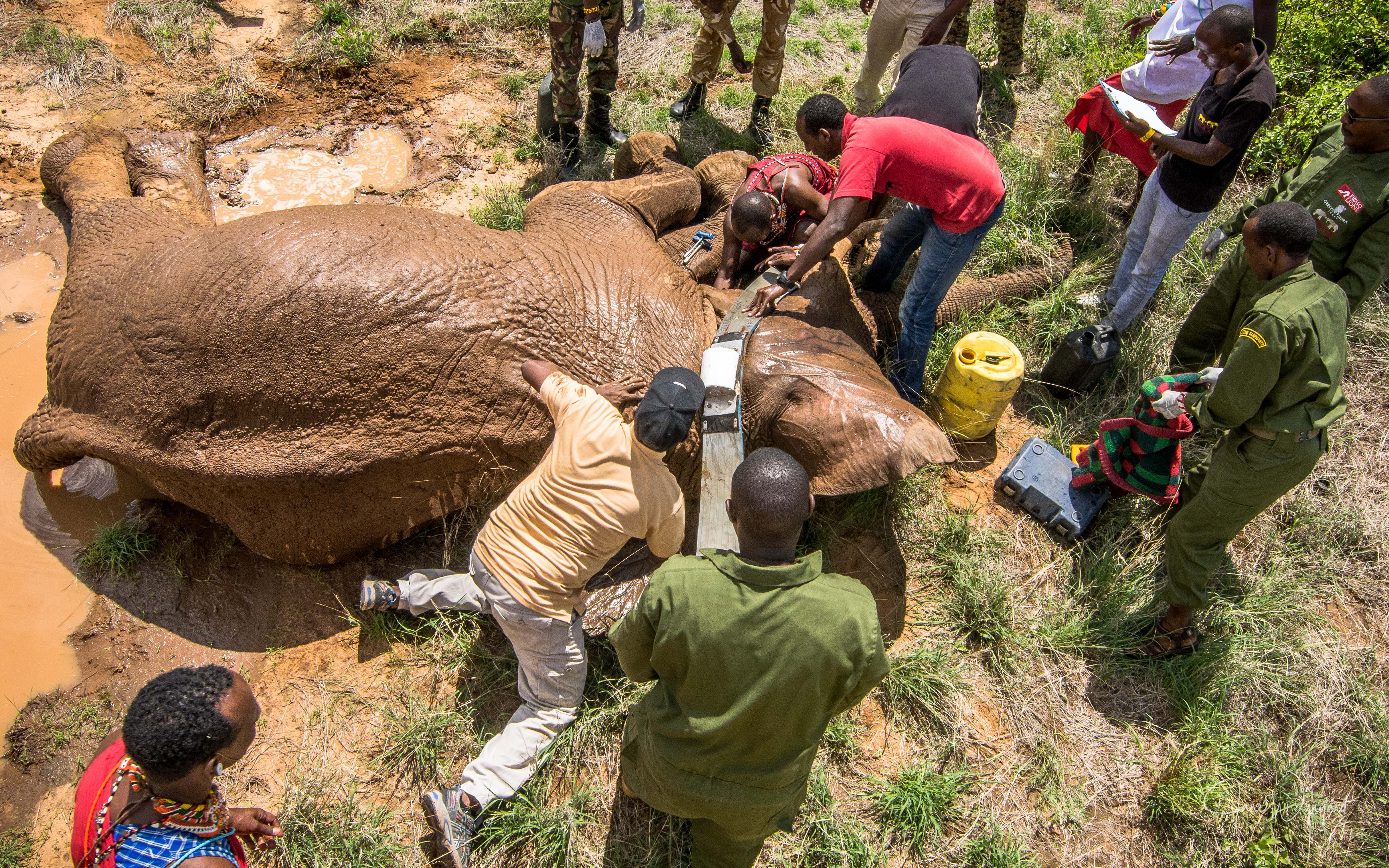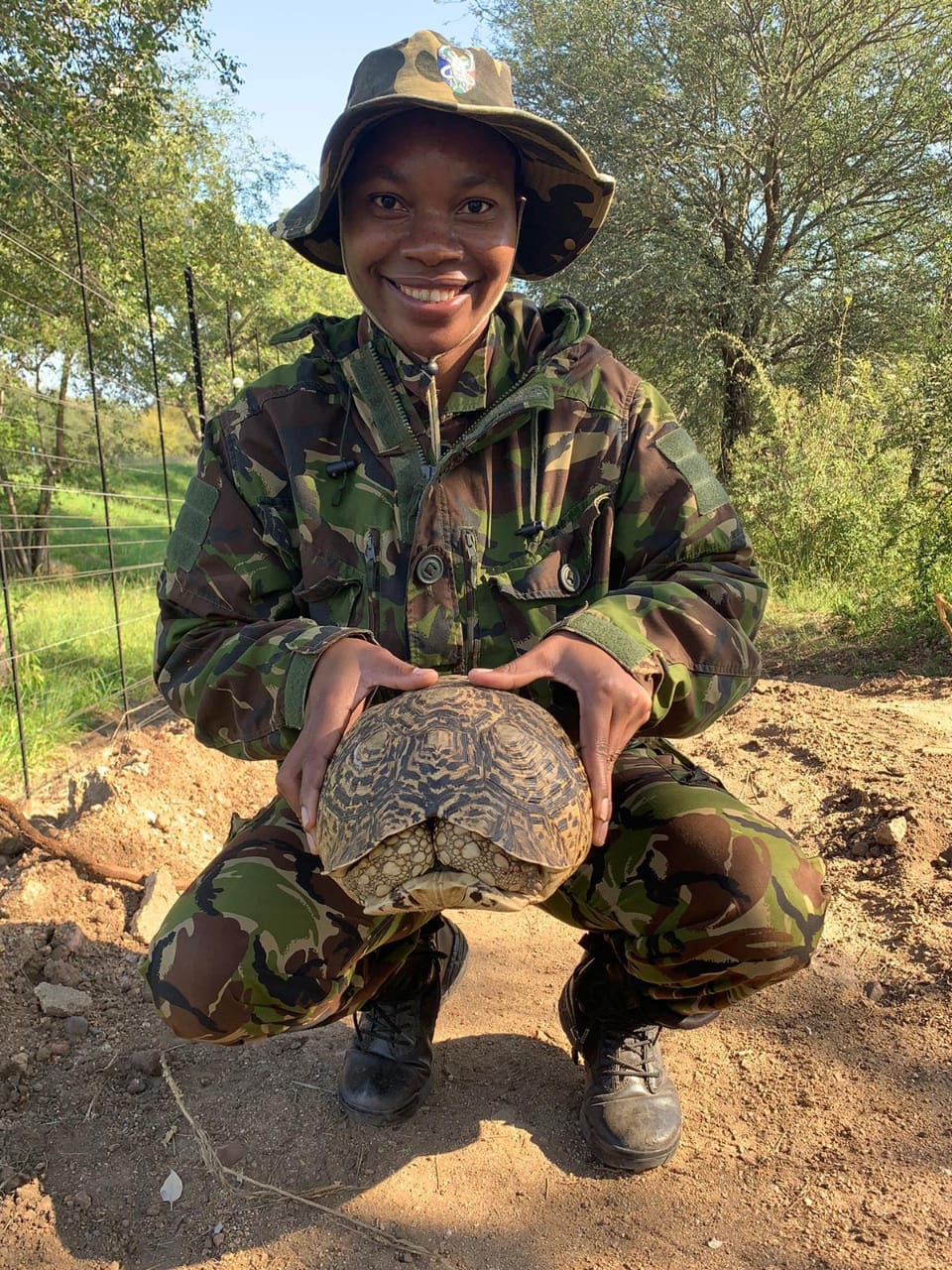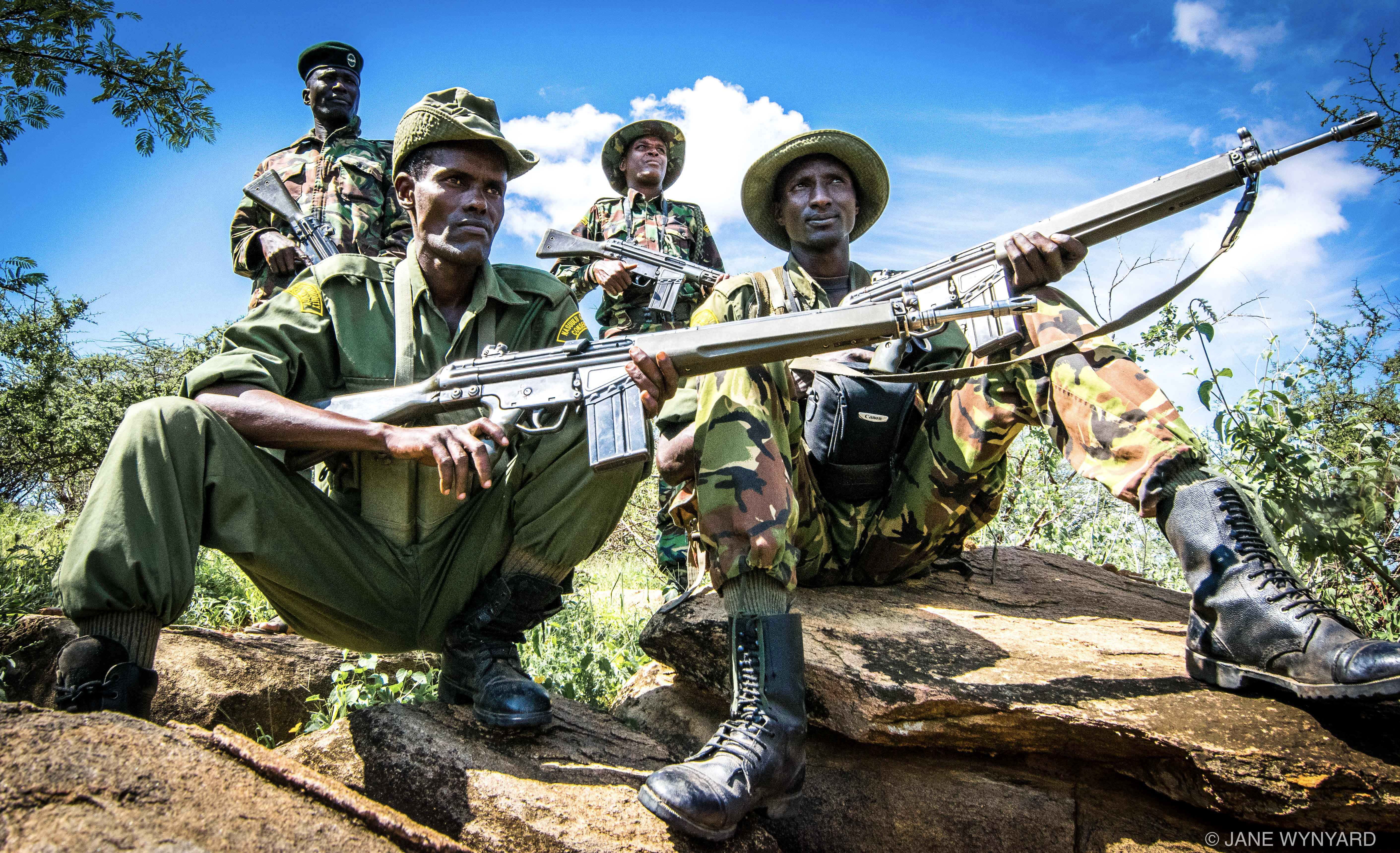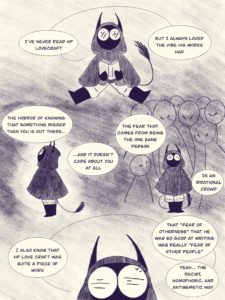
Photo by Ilan Godfrey/Getty Images for Lumix
In the last two months, news reports have proliferated of animals roaming freely in areas typically inhabited by humans. Images shared on social media—a herd of goats roaming the streets of a Welsh town; a pride of lions fast asleep on an empty highway in South Africa; a group of jackals in central Tel Aviv—have reinforced that narrative.
Several experts, however, say the reality on the ground is more complicated.
It is true that with national parks and wildlife reserves closed to visitors because of the coronavirus pandemic, animals in some parts of the world have been able to let down their guard. One ranger in Yosemite National Park, Katie Patrick, said in a Facebook Live video that black bears there appeared to be “having a party” since the park closed to visitors on March 20.
But in places where wildlife is at greater risk of human exploitation, the sudden absence of tourists is putting both the animals and the people who rely on visitors for their livelihoods in increased danger. This is especially true in Southern Africa, where the threat of poaching—both the international illegal wildlife trade and local subsistence hunting—has become even more pronounced in some areas since wildlife reserves were forced to shut their doors in March.
Mashatu Game Reserve, situated in the easternmost corner of Botswana between South Africa and Zimbabwe, is one of those places. There is “definitely” an increased risk of poaching with the park closed, said Kelly Evans, an administrative executive at Mashatu. The reserve, Evans said, is continuing to pay anti-poaching officers and safari guides “to drive around during the day as a presence,” in an effort to keep away would-be poachers. She also noted that there are “a few horses riding around still, as deterrents.”
It appears to be working. In the last month, anti-poaching officers at Mashatu have not reported any new poaching activity, though with the park closed the threat remains constant. In recent weeks, Mashatu has increased the frequency of its patrols to further discourage would-be poachers from entering the property.
“Our anti-poaching teams and rangers are working extra hard during this time to patrol the reserve 24/7,” Evans said.
But with fewer well-intentioned eyes out in the bush, poachers may be harder to spot. While the number of reported killings of wild animals in South Africa and Botswana is not much different from a normal year, there has been an increase in the number of animals killed in areas that would typically be filled with tourists.
Poaching has increased most notably in Botswana’s Okavango Delta, the nation’s most popular tourist destination. In late April, officials became so concerned about rhino poaching in the Delta that they began evacuating the animals to an undisclosed location considered to be safer.
In contrast to Mashatu, a family-run reserve of 112 square miles, South Africa’s Kruger National Park, at a staggering 7,523 square miles, has seen a dramatic decrease in poaching, according to Craig Spencer, the founder and CEO of Black Mambas, an all-female anti-poaching unit there that specializes in the protection of rhinos.
“One could have expected poachers to take advantage of the lockdown, due to a vacant landscape and less eyes and ears from the tourism industry,” Spencer said in a statement provided to local South African media. Instead, he noted, “Rhino poaching is way down.”
In an interview, Spencer said he was thrilled with the absence of poachers from Kruger. “This is the quietest it’s been in my entire 24 years” of anti-poaching work, he said. “Rhino poaching has been brought to its knees. It’s insanely quiet.”
Five rhinos were killed in Kruger this April, compared to 46 in April 2019, according to data provided by the South African Department of Environment, Forestry and Fisheries, making it the best month for rhinos in the park since September 2013.
Spencer explained that this drop was due in large part to the closures of international borders. “Realistically, rhino horn has to move out of the country,” he said. “The market is overseas in China and Vietnam, so thanks to the virus the supply and demand trade has been interrupted tremendously.”
An analysis commissioned in April by the non-profit group United For Wildlife reached a similar conclusion: “The macroeconomic impacts of the pandemic will undermine the overall profitability of the global illegal wildlife trade,” its authors wrote.
But, the report predicts, unless dramatic steps are taken by governments to “diminish the social status and increase the stigma of owning and trading in wildlife products,” the market for them may return to full strength by 2022.
That market, Evans pointed out, includes the so-called “wet market” in Wuhan, China, where COVID-19 is thought to have originated. “Moral of the story, wildlife markets and the trade in wildlife needs to stop,” she said. “We need to put pressure on China to ban these wet markets and the trade in wildlife.”

Photo by Jane Wynyard via Tanya Onseiro
Though China and Vietnam have both taken concrete steps to curb the wildlife trade in recent months, it is unlikely that new regulations—or even an outright ban—would slow the demand for illegal wildlife products. China banned the sale of ivory at the beginning of 2019, and while the market has receded, it has not disappeared. Similarly, smuggling rhino horn, pangolin scales or any other illegal wildlife parts across international borders is already a crime, but corruption and weak enforcement has continued to allow those trades to flourish.
The United For Wildlife report also predicts that “there will be no widespread operational pause for wildlife traffickers,” and goes on to state that “the pandemic will not significantly diminish illegal wildlife supply availability, smuggling modes, or demand patterns in the short to medium terms. On the contrary, it will very likely open up new opportunities for traffickers and poachers in certain areas.”
With so much uncertainty, the Black Mambas have been conducting extra patrols in recent weeks. “We’ve had to up our game,” Spencer said. In his statement to local media, he wrote, “We need to be on our toes and make sure we use this time to apply our minds to solutions (and using the process of elimination, work out who might be involved on the inside).”
Internal corruption, Spencer pointed out, often serves as a boon to poachers who would otherwise face significant challenges getting in and out of protected areas undetected. The drop in poaching, he said, “seems to indicate that there were dirty people working inside the park, and now that they’ve been sent home, they no longer are able to dip into the pot, if you know what I mean. No poacher can be successful unless he has somebody helping him on the inside.”
The dichotomy of the poaching threat in Botswana and South Africa began months before the pandemic. Botswana has seen a dramatic rise in rhino poaching over the past year: officials there reported that as many as 50 rhinos—a tenth of the country’s population—have been killed there since June 2019. By contrast, the drop in poaching incidents in Kruger “started quite a few months back,” Spencer said, “towards the end of 2019,” months before the lockdown began.

Photo courtesy of Craig Spencer
Animals, however, aren’t the only ones threatened by the sudden disappearance of tourists.
Though most wildlife reserves are continuing to pay rangers, the money may soon run dry. Africa’s tourism industry typically generates nearly $40 billion per year, much of which goes directly to conservation efforts and to the people who work with and around wildlife. In 2019, for example, 85% of the money allocated for South African National Parks, the organization that manages South Africa’s public lands, came from the tourism industry. Now, its employees, along with those in the rest of the wildlife tourism sector, are increasingly vulnerable and largely without a stable income.
Typically, local economies dependent on wildlife tourism operate within what Evans described as the “eco-tourism triangle.” The first corner of the triangle is made up of land owners, who employ local people and are largely responsible for their wellbeing. The second corner is “the communities that reside on the periphery of the reserves and who look to conservation for their livelihoods.” The third corner is the tourists themselves, who, “through their visits, are unknowingly funding the conservation and employment prospects for these two other vital corners.”
As with any triangle, each corner is necessary to support the others; when one is removed, the others fall with it.
With global travel all but shut down, locals who have come to rely on tourists to make a living have had to adapt quickly to sustain themselves. Some have turned to bushmeat hunting, a practice separate from the illegal wildlife trade that involves the indiscriminate snaring of wild animals for food.
Everyone interviewed for this article was alarmed by a sudden rise in the bushmeat trade, and both Evans and Spencer said that with parks closed, the newly unemployed are beginning to turn to wildlife for sustenance.
“It’s not reasonable of us to expect them not to,” Spencer said. “They had good-paying, stable jobs, and they have a lifestyle to support. Even if they planted vegetables and grow goats and chickens, they’re still not going to see a return on those crops in the short term.”
“Especially because we have no fences, and people are going very hungry, snares will become more common and animals will be viewed as food rather than as an asset to tourism,” Evans said.
Desperation, Spencer added, “will force people to put all of their values and morals aside.”
In both South Africa and Botswana, bushmeat hunters primarily target antelope. Kudu, in particular, is one of the most sought-after prizes in the bushmeat market. But at the end of the day, Spencer said, a snare is a snare, and any animal that unwittingly walks into it is likely to be eaten.
As tourism dollars have stopped flowing into the communities surrounding wildlife reserves, local people have had to become increasingly reliant on their own gardens and farms for food, rather than on their paycheck and the marketplace. Because of this change, human-wildlife conflict could increase, said David Daballen, Head of Field Operations at Save The Elephants, a research and conservation organization in Kenya’s Samburu National Reserve.
“With elephants competing for space and resources in some areas, they are susceptible to human-elephant conflict as their paths often cross with herders and their livestock,” he said, pointing out that elephants are capable of wiping out a year’s worth of crops “in a single night.”
“Both farmers and elephants can be wounded or killed in the conflict that ensues.”

Photo by Jane Wynyard via Tanya Onseiro
The rise in bushmeat hunting has also raised new ethical questions for anti-poaching officials. On the one hand, their job is to protect wildlife from illegal human activity, even risking their own lives to keep the animals safe. On the other hand, they can sympathize with the challenges faced by bushmeat hunters, who typically operate out of desperation rather than for profit. Often, they come from the same communities.
“How do you deal with somebody who’s coming into the park to feed his family off an impala?” Spencer mused. “It’s very different to somebody who’s coming in to kill six rhinos and he’s got a mansion and fancy cars. You have to deal with them differently, and that’s a moral dilemma that we have to struggle with.”
While anti-poaching teams typically focus on deterrence, their work occasionally necessitates the use of deadly force. Poachers, almost by definition, are armed with weapons made to kill, and in the past have shown little hesitation to open fire on security forces who pose a threat to their trade.
In March, a soldier in Botswana’s Army was killed during a firefight with suspected poachers in the country’s north. In April, Botswana security forces shot and killed five poachers in two separate incidents.
Around Mashatu, though, Evans said the most potent dissuasion technique is word of mouth. In their time off, she said, anti-poaching officers have been “making sure that word on the street is that they are very much around and active. Word travels fast in this area, and as long as poachers know that our team is out there, they will hopefully be deterred.”






